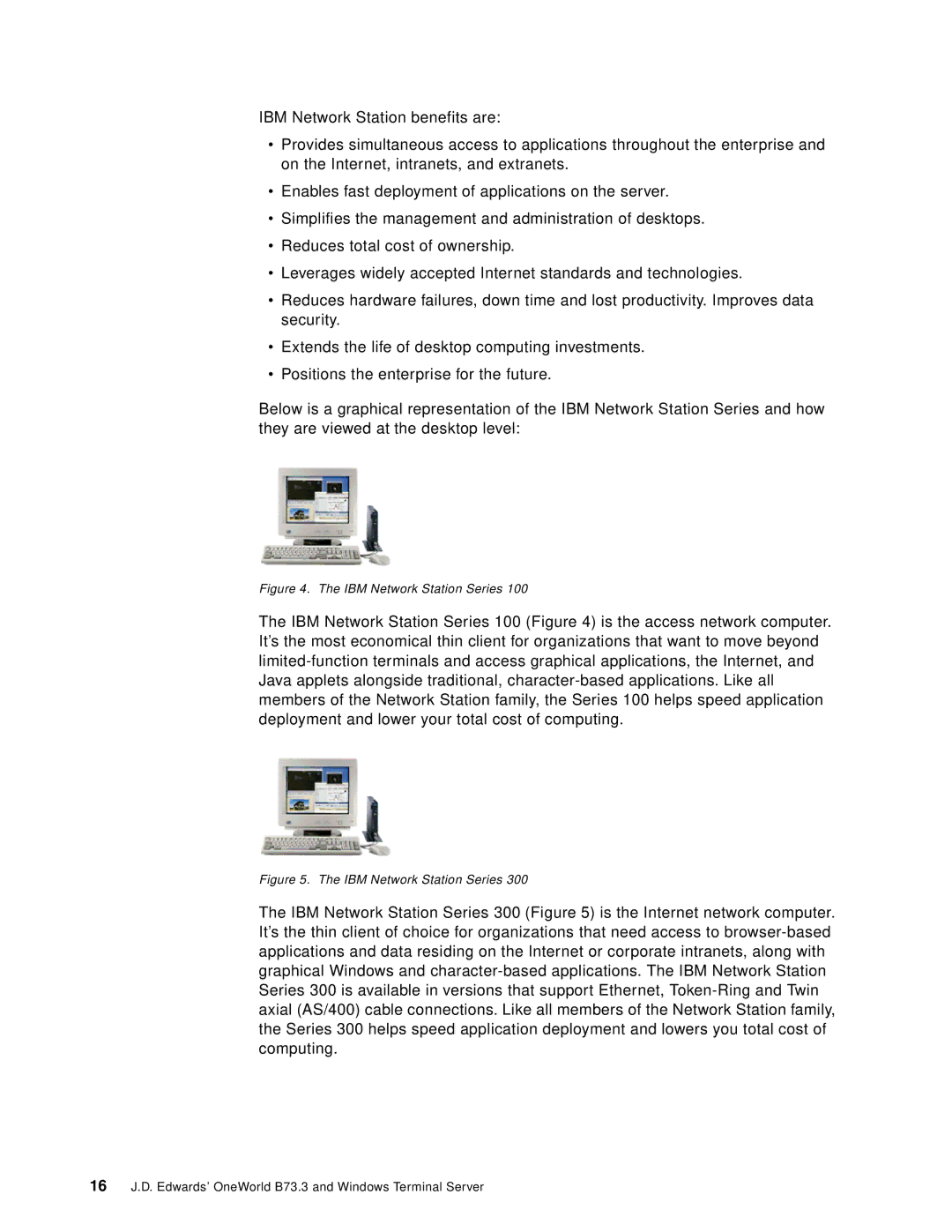
IBM Network Station benefits are:
•Provides simultaneous access to applications throughout the enterprise and on the Internet, intranets, and extranets.
•Enables fast deployment of applications on the server.
•Simplifies the management and administration of desktops.
•Reduces total cost of ownership.
•Leverages widely accepted Internet standards and technologies.
•Reduces hardware failures, down time and lost productivity. Improves data security.
•Extends the life of desktop computing investments.
•Positions the enterprise for the future.
Below is a graphical representation of the IBM Network Station Series and how they are viewed at the desktop level:
Figure 4. The IBM Network Station Series 100
The IBM Network Station Series 100 (Figure 4) is the access network computer. It’s the most economical thin client for organizations that want to move beyond
Figure 5. The IBM Network Station Series 300
The IBM Network Station Series 300 (Figure 5) is the Internet network computer. It’s the thin client of choice for organizations that need access to
16J.D. Edwards’ OneWorld B73.3 and Windows Terminal Server
